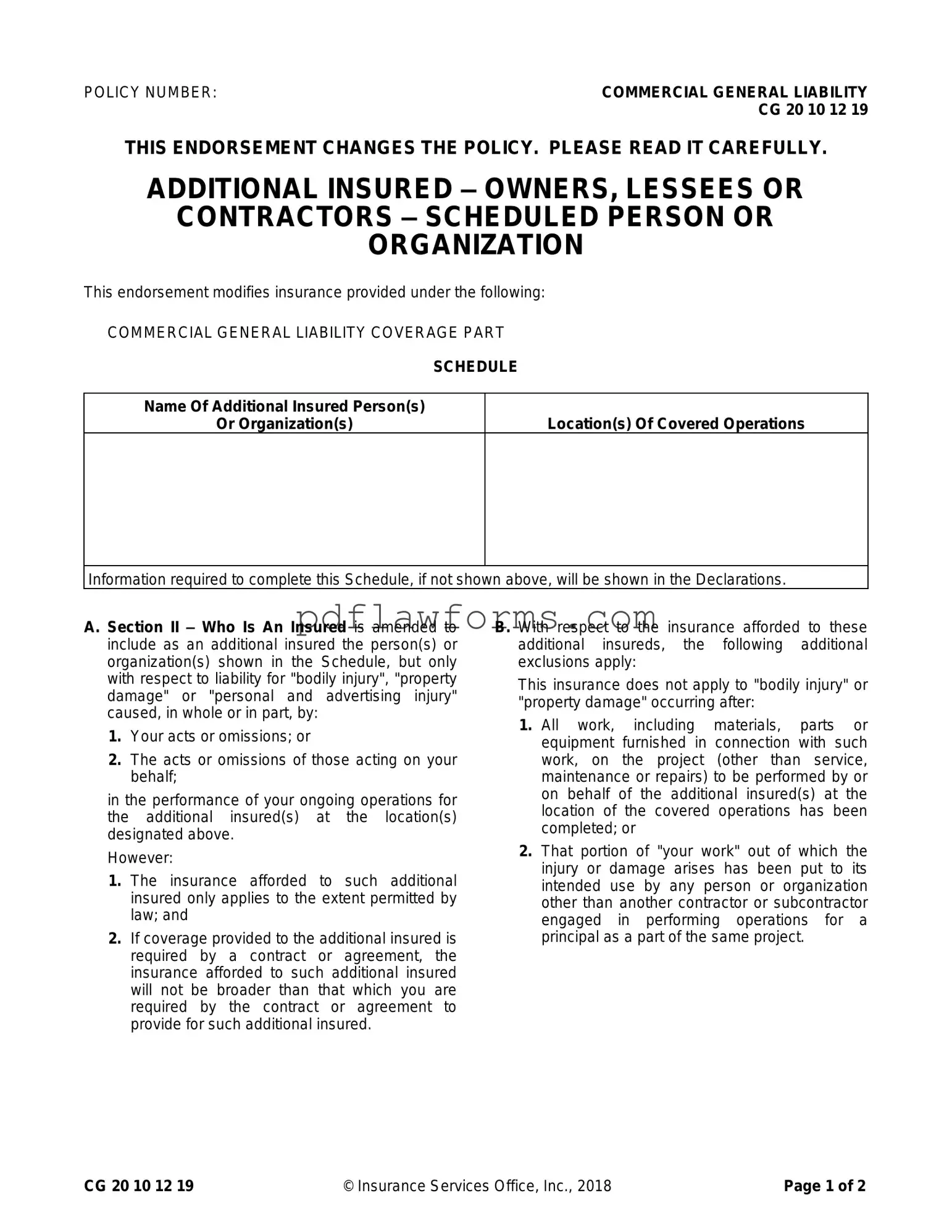Filling out the CG 20 10 07 04 Liability Endorsement form can be a straightforward process, but mistakes are common. One significant error occurs when individuals fail to include the correct policy number. This number is essential for identifying the specific insurance policy in question. Omitting or miswriting this number can lead to delays or denials of coverage when it is needed most.
Another frequent mistake involves neglecting to list all required additional insured parties. It is crucial to accurately identify each person or organization that needs to be covered under the endorsement. Leaving out an additional insured can expose both the primary insured and the omitted party to unnecessary risks.
People often misinterpret the location of covered operations. This section must clearly specify where the additional insured's operations will take place. Failing to provide this information can result in coverage gaps, leaving parties unprotected during critical operations.
Inadequate attention to the scope of operations is another common oversight. The endorsement is intended to cover liabilities arising from specific acts or omissions related to the ongoing operations. If the scope is not clearly defined, it may lead to disputes about what is covered under the policy.
Some individuals mistakenly believe that the endorsement automatically extends broader coverage than what is stipulated in their contracts. This misunderstanding can lead to serious implications. It is vital to remember that the coverage provided to additional insureds will not exceed what is required by the underlying contract.
Another error arises when the limits of insurance are not properly understood or communicated. The endorsement specifies that the maximum amount payable is either the contractually required limit or the available limits of insurance, whichever is less. Misunderstanding this can lead to financial exposure in the event of a claim.
Individuals sometimes overlook the importance of reviewing the exclusions section. The endorsement contains specific exclusions that can significantly impact coverage. Not being aware of these exclusions can lead to unpleasant surprises when a claim is filed.
Inaccurate completion of the form can also occur when individuals provide incomplete information. Every field must be filled out completely to ensure that the endorsement is valid. Incomplete forms can be rejected, resulting in a lack of coverage.
Finally, failing to keep a copy of the completed endorsement for personal records is a mistake that can have long-term consequences. Having documentation readily available is essential for reference and can be critical in case of a dispute or claim.
